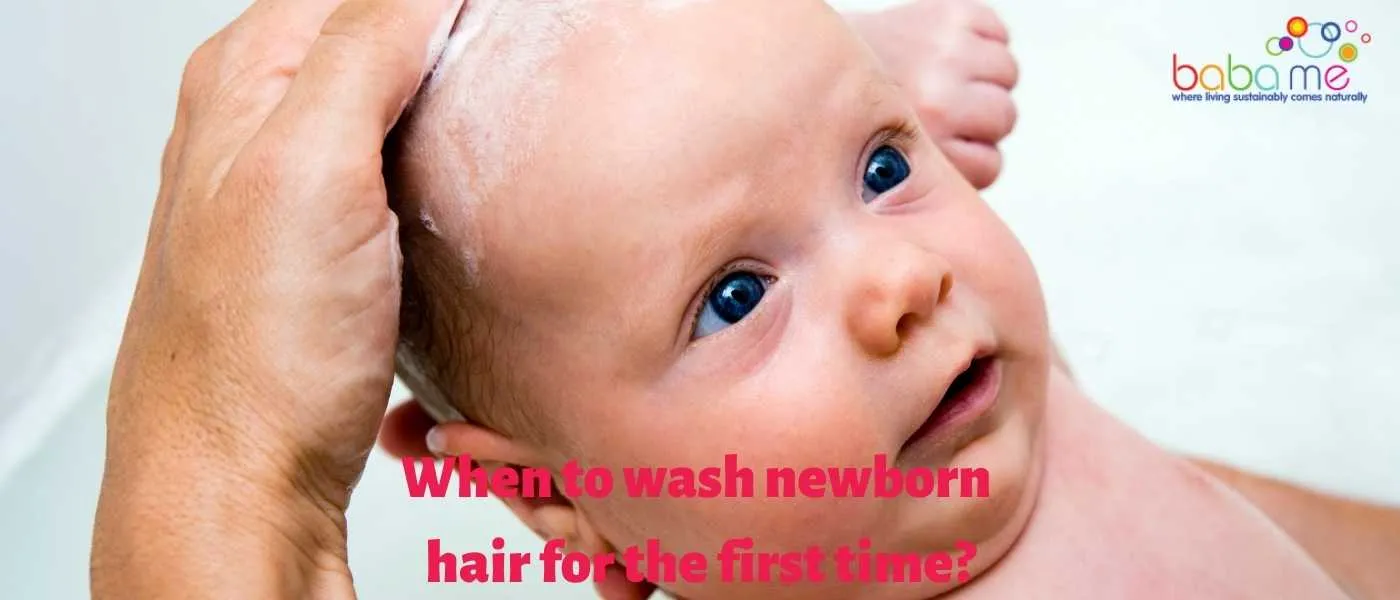Newborns tend not to have very much hair, and it doesn’t usually require shampooing. If your little bundle was born with a head full of hair however, then you may be wondering if you need to take any extra measures to keep it clean and what baby toiletries you might need.
The short answer is no, not really! A soft-bristled baby brush or wide-toothed comb is all you need to remove any debris or skin flakes from your baby’s hair. Your baby’s skin is still developing and you should avoid most cleansers for at least the first month (longer if your bub was premature).
Your baby’s head and hair can be kept clean using plain water and a washcloth when topping & tailing – which describes washing the face, neck, hands, and bottom using just a bowl of warm water.
Sometimes babies can develop something known as ‘Cradle Cap’, which is basically a build-up of oils and skin on the scalp. Sometimes the eyebrows can be affected too. It’s a really common and totally harmless condition, and will usually resolve on its own in a few months. It can look unsightly though, so most parents will take measures to remedy it.
Medicated shampoos are available for stubborn cases of cradle cap but since your baby’s skin is still paper thin and absorption can occur more easily than with mature, adult skin, then you should ideally avoid these harsh cleansers if at all possible.
Check with your healthcare provider if you feel that your baby’s cradle cap is a problem; especially if you notice any red, broken, oozing skin or other signs of infection.
A natural, yet effective way to tackle cradle cap is to apply oil (olive, coconut or castor oil works well) to the scalp. Let the oil sink in for at least 10 minutes, although leaving it on overnight will produce better results.
Once the crusty patches are well softened, you can use a baby brush or comb to gently remove the flakes. We find brushing against the direction of hair growth works best but be gentle! Obviously, you don’t want to hurt your baby, but you also don’t want to stress the hair follicles which can speed up hair loss or breakage.
On that note, your newborn’s hair will probably begin to fall out sometime after birth, and will probably continue to do so for around the first 6 months. This is due, in part, to hair growth cycles; but also, to the huge drop in hormone levels after delivery. Mums can experience hair loss after pregnancy for the same reason.
When your baby’s hair begins to grow back in it may be completely different from his/her newborn hair! It may be a different colour or texture; it may grow quickly or you may have a little baldie way into toddlerhood!
When your baby has enough hair to really need a proper wash, then you may want to use a baby shampoo or an all over baby wash. Again, remember to keep it as simple as possible. Your baby’s head smells delicious enough as it is; you don’t need anything highly fragranced.
As few ingredients as possible is best. Look for something that is kind to eyes, mild and non-toxic. When washing the hair take care to avoid suds near the eyes or mouth. It’s also a good idea to wash the hair at the end of a bath so your little one doesn’t lose too much body heat sitting in a bath with wet hair. It also means the bath water isn’t full of suds!
Take Aways
•Newborns generally don’t need shampoo, but if they have a lot of hair, you can use a soft-bristled baby brush or wide-toothed comb to remove any debris or skin flakes.
• You can keep your baby’s head and hair clean using plain water and a washcloth.
• If your baby has cradle cap (a build-up of oils and skin on the scalp), you can try applying oil to the affected area. Let it sit for 10 minutes (or overnight) before gently brushing away the crusty patches with a baby brush or comb.




